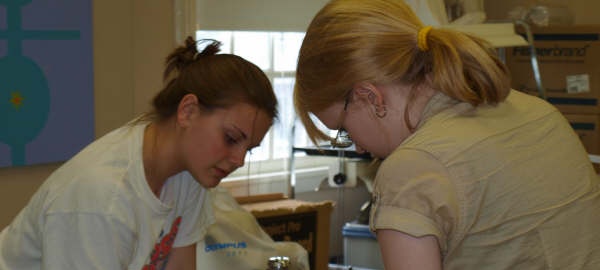-
The Streams Project offers interested high school teams the opportunity to conduct water quality research.
High school teams are groups of 1 teacher and 2 students (at least one female student required). Teams will:
-
Sample streams close to their schools:
After a training week in early summer, teams are responsible for sampling two stream sites twice-monthly after school through the summer and fall months.
-
Participate in data analysis by using their data, and if they choose, data produced through
the Streams Project community, to answer a research question of their own design. See the
"What We Measure" section for more info on the Streams Project data.
-
What is the time commitment for High School Teams?
-
Each team is taught the skills necessary to participate in the Streams Project during the Training Week of June 27 to July 1, 2011.
Equipment and supplies necessary to continue the project over the summer and academic year are provided at the start of the project.
Participants will present their results at a Research Symposium in the spring at UVM. The training week and symposium are required
elements of participation.
-
What are the benefits to High School Students?
-
This experience will provide students and teachers invaluable insight into the professional world of streams
science, technology, engineering and math (STEM). The teams not only learn cutting edge techniques used in
specific areas of STEM, they also understand how a research team functions and experience first-hand the
scientific process.
-
What are the benefits to High School Teachers?
-
Not only is this experience a rewarding opportunity to work closely with students, but high school teachers
are also eligible to receive Continuing Education credits for their participation. The fees are regular UVM
CE fees. For more information on obtaining credits, please contact the Streams office.
-
Teachers receive a $1000 stipend, as well as $1000 of discretionary funds for their school.
|
|
|




